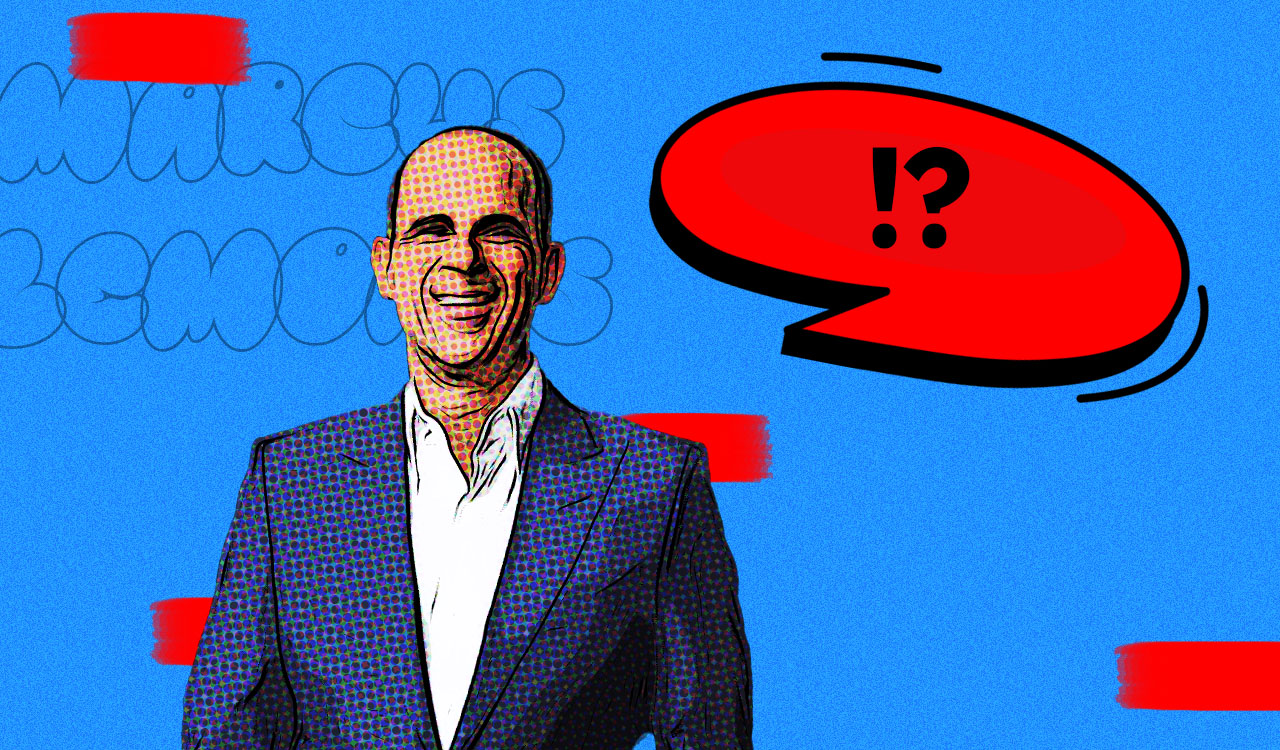How do you understand and motivate today’s workforce? Being a corporate leader today has never been more complicated than it is right now. The demands of operating a business are daunting between the logistics of sourcing products, managing supply chains, financial engineering, marketing, sales, data analytics, communications and personnel management.
Power Shift
For over 40 years, the mantra of CEOs and CFOs has been to shun any concern other than those of shareholders’ demand for profits. That mantra has been efficient beyond belief. However, this profit-driven efficiency is now challenged by an emerging demand that will prove to be just as critical. The status quo position of profits over people simply won’t work anymore. What leaders need to do now is recognize the significant influence of what’s happening on the outside is profoundly impacting what is happening inside the organization.
[callout]Modern work culture finds itself today at the intersection between a great promise of reinvention and the last gasps of an aging set of institutions, norms and structures.[/callout]
New Pressures
External considerations make up a perpetually lengthening list for the C-suite to manage. Just consider today’s complex societal and consumer-driven issues:
- The pandemic.
- The state of race relations.
- The opportunity gaps.
- The digital divide.
- Inclusivity and diversity.
- The role of law and order.
- The financial engineering of the economy.
- The concept of truth.
- The role of technology.
Putting only shareholders’ concerns in context and addressing these concerns will ultimately cause companies to sink or swim. The more intelligent strategy is to consider the needs and concerns of all your stakeholders, including customers and employees
Leadership Accountability
For those in whom we invest to execute our corporate plans, how they fare in today’s turbulent marketplace will not be judged only by their financial performances. From the creation of a workforce — the way we recruit and hire, construct our teams, decide on our workflow — to the values leaders bring to the world, it’s their employees who represent the most significant variable to consider.
Engagement, a measure of how connected people are to their jobs and their employers, has always been an effective workforce KPI. The original engagement surveys began in 1980’s by the firm Watson Wyeth. Gallup, Harvard Business Review and others have tracked this index over the years. The survey shows consistently that there is a clear connection that the companies with a higher index of engagement outperform those companies with lower scores.
And lest you think building a modern workforce is something that we can continue to offload on HR, consider that in the world of pre-pandemic America, we were losing an estimated $1 trillion per year due to the sinking rate of employee engagement. And that was before everything we lost the last year to Covid 19.
Your Greatest Asset
Consider this from the employees’ perspective: Work may be one of the last refuges where we do not get to choose whom we sit next to for eight to ten hours a day.
Modern work culture finds itself today at the intersection between a great promise of reinvention and the last gasps of an aging set of institutions, norms and structures. The fraying of our traditional connective tissue within our country — from government, across media platforms and our own personal, shared expectations — has presented us with a unique set of challenges.
We are confronting a Faustian choice.
On the one hand, we can continue to follow our historical path towards the same way we have always conducted business. Or, on the other hand, we can create our future powered by new models, tools and expectations designed to navigate the current network spawned by technology, digital and the power of social media. This choice will be made by our new corporate leaders who will ultimately succeed the generation of legacy leaders who are stuck in doing business as usual and do not have the vocabulary or skillsets required to succeed in the digital era.
Science-Based Leadership
Fortunately, we live in an era of phenomenal growth in the sciences that allows us to understand and manage many of these new stress points. The challenge for leaders is not the lack of science to help them understand the context of their employees\’ lives, but which science to pay attention to. The temptation to bow to news headlines in managing a demanding shareholder and workforce will backfire. Similarly, taking direction from academic studies and research can fall short of meaningful change. The sad reality is that many leaders are unprepared to tackle the onslaught of demands with lasting solutions and instead have short-term kneejerk reactions. I therefore offer a playbook that has proven successful in how leaders might manage these challenges by understanding two key factors: context and the tools available to address what stakeholders want and why. When we refer to context, we are referring to the personal impact of all of these modern stressors on our workers. So, instead of measuring behavior, measure why people do what they do. “Why” is the context of their actions. Our leaders must recognize how context affects each of them uniquely and differently.
The Limitations of Big Data
It is hard to overstate the role of data in today’s modern business toolbox. But I would offer a word of caution when trying to use data as the sole source to understand people and why they do what they do. There is a dynamic tension between uncovering a difference in the data of personal profiles and the complexity of understanding how one might apply this difference in the pursuit of the desired outcome. Unfortunately, a lot of these differences captured by data points don’t have an accurate means of predicting behaviors. This is especially true for discoveries and understandings that focus on a narrow source of input. As sophisticated as data science has become, it\’s tough for behavior change to hold up to the scrutiny of the data we track today.
I believe that no single data discipline is the answer to the essential questions about behavior. As such, our research permeates everywhere to identify what is working. We focus on three areas of science that are the source of many of today’s breakthroughs. The fusion of data science, neural science and behavioral science collaborates across the valuable real estate of behavioral knowledge. As you consider the combined insights of these systems, it helps to remember the adage that people are more alike than different. Yet it is those differences that are the points of friction that can escalate to cause a workplace meltdown.
Whole Person Insights
We use a different set of tools to understand employees. I recommend a holistic system that builds insights that rely on the whole-person perspective. Focusing on the whole person typically results in identifying attributes that are more stable and transcend any situational peculiarities. A whole person approach is also multidimensional and not reliant on systems built on a single factor that claims comprehensive understanding and behavior typing.
The whole person approach resists considering a person as a collection of attributes, especially as it comes to motivations. Rather, the measure of the whole person is a dynamic interplay between the categories of one’s emotional, social, spiritual, physical and intellectual domains.
Let’s look at the traditional approach in identifying appropriate employees based on a standardized pre-interview assessment that tempts managers to generalize those results. That approach might measure certain traits such as empathy. But unless you take a whole person approach, traditional assessments to not reveal true behavioral insights.
There is another shortcoming of potential employee recruitment: reliance on demographics. For over 100 years, we have linked people\’s motivations to details of their demographic traits. Demographics have long been associated with telling us who you are and what you do, but they have been sorely lacking when it comes to understanding the motivations for why you do things. We need to go beyond demographics.
Context Matters
Finally, context is the key that unlocks understanding how things will influence the world of work. Understanding the context of world events is as important and understanding the context of how those events influence and impact your workforce. Life doesn’t happen in a vacuum; context is critical to the outcomes of those events. And understanding context helps manage and motivate a workforce. I would ask you to consider how we might manage these scenarios by providing the context of the impact of whole person insights:
- How do we engage our workers back from Covid 19 detachment?
- How do we understand the impact of structural racism on our workers?
- How do we manage expectations for career growth?
- How do we use our benefits to create healthier lives and thriving employees?
- How do the tribal self-identities of our politics influence our teamwork?
- How do we define the concept of diversity? Race? Gender? Worldview?
- How do we understand technology’s influence on all of these?
The Art of Listening
We have the science to better understand our employees. And as we know customers are in the driver’s seat in the marketplace, employees point leaders in the direction they need to follow to deliver a workplace that engages, nurtures, builds loyalty and high performance. We know that accounting for these macro societal challenges and stress points will be the litmus test for business. Business can lead the way to cultural transformations in the broadest sense. It’s up to enlightened leadership that starts at the top, and then is executed by management that is sensitive to, and responsive to the workforce. The bottom line is that adopting new practices isn’t nice, it’s necessary because the next-gen workforce demands it.



